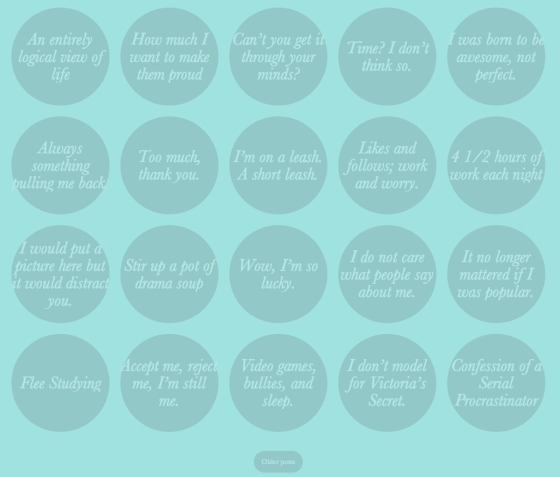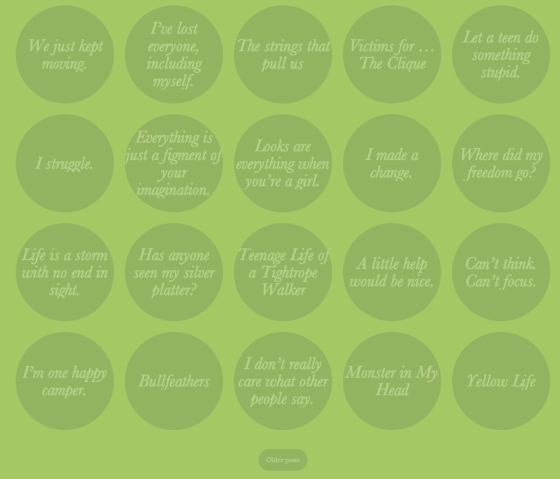Hello and welcome to the blog you won’t be reading. I created this massive thing a number of years ago and have fiddled around with it ever since. If you want to see what my classes did three years ago, snoop to your heart’s content. But if you want to know what you’re doing THIS year, look to the right and click on your particular course.
Each course I teach has its own blog and each blog has multiple blogs within the blog. For example, if you’re in English 11, can click on your link and you’ll see links at the top of the page for blogs within the blog: Lord of the Flies or Titanic or Poetry or Macbeth. There’s also a section at the top that tells you all of the assignments for each term; you can keep track of what they are and you can also print out the handout for each assignment. If you ever feel like you’ve lost track of what you’re doing, just go to my blog.
So that’s it. There are only a couple of rules I’d like to emphasize: Don’t use your cell phone in class unless we’re specifically using phones for a purpose. It just distracts you. Hand in work on the day it’s due. If you can’t for a reason, tell me the reason. Be on time. If you get stuck or don’t know what you’re doing, show up for Flex Time or come to see me after school. There you go. That’s it.
Happy New School Year.













